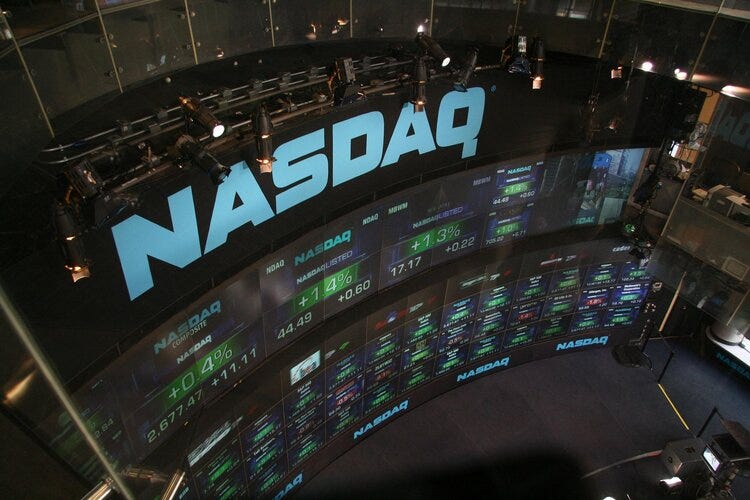We’re moving fast to keep up with all the volatility in business news this week. You can read this one in about five minutes. Follow us on Twitter, and share this post with a friend:
As soon as we put out a piece about “cracking markets,” stocks surged with their best two-day performance in years. This is why we don’t do investment advice, but we’re always fascinated by the present. What exactly is going on?
In short, working people are looking at tougher times and that’s great news for business. Understanding the different ways that investors and workers see inflation, the models of the world those experiences imply, and their competing solutions help us understand the future a little bit too.
Markets -- especially the stock market -- rarely need a reason to go up. Everyone in the market is there to make money, and almost everyone makes it when stock prices advance. There is a small class of short sellers that bet on down trends, but the best case scenario for everybody else is “buy high, sell higher.” So markets are always looking for an excuse to bid up prices.
The specific excuse this time is new hope that the Federal Reserve and other central banks will reverse their tightening cycle sooner than expected. That hope sprang especially high on Tuesday as the “JOLTS,” or “Job Openings and Labor Turnover” report showed a significant weakening of the job market. Employers withdrew more than a million job opportunities in July (this data comes later than most numbers).
That’s the biggest drop -- 10% in a single month -- since April 2020, when the economy was in a full-on collapse. Markets think that this means that inflation will get better soon, which is good for them because inflation lowers the “present value” of their capital. Capital is forward-looking: investors put money into businesses today in order to pull more out tomorrow. If inflation is zero, then a dollar today is a dollar tomorrow, and a business that pays you $1.25 for that dollar returns you 25%.
But if inflation is 10%, a dollar today buys what you’ll need $1.10 for tomorrow. That same $1.25 payout is now only 13.63% more than $1.10. Stock prices reflect this phenomenon by “discounting” future cash flows, and the bigger the discount -- i.e. higher interest rates, which reflect market expectations around future prices -- the lower stock prices go. More inflation means weaker returns.
Working people have a much more obvious reason to not like inflation: it makes things more expensive, and wages rarely rise fast enough to keep up. That means “real wages” -- the actual amount of goods and services your paycheck can buy -- go down, and the same JOLTS data that has Wall Street happy about the job losses to come showed a 2.8% year-over-year decline in real wages.
This brings up a solution to the problem ignored in mainstream business or political discussions: get wages rising faster than inflation. China effectively did this in recent decades, intentionally devaluing its currency while average wages went up 162% from 2010 to 2020. In previous generations, Brazil and Southern Korea allowed high double-digit annual inflation as a cost for rapid economic expansion.
Capital has a much more familiar solution to inflation: raise interest rates to suppress aggregate demand across the economy, cooling off prices everywhere. This aggregate demand comes from both businesses -- who find it harder to borrow money to finance their operations, slowing their expansions -- and the working people who get laid off by those businesses.
The JOLTS data suggests that this process is already working, and so the Fed will get to “pivot” sooner than expected, easing interest rates so that stock prices can go back up -- a lower discount rate means higher present value today.
This solution also reflects the orthodox belief that inflation is a monetary phenomenon -- there’s too much money in the economy chasing too few goods, so we need to draw money out by making interest-bearing deposits more attractive. The labor-oriented alternative assumes that prices reflect the conditions of production, with rising uncertainty about where to deploy productive capital increasing carrying costs up and down the value chain.
Working from this assumption would mean central authorities could direct the flow of capital, set economic strategies across all enterprises, and set mandates with the interests of employees in mind. The other way just needs bankers ready to dial up or down the cost of investment, and with it access to jobs, housing, and other vital needs.
The news this week suggests that enough people might be suffering enough to justify pushing capital back into Wall Street again any day now. And that’s the kind of intervention investors can get behind, always.
Disclaimer
Our only investment advice: Short Bart Harley Jarvis. (NSFW)
Contact us with questions, perspectives, feedback, or stories we might have missed.




